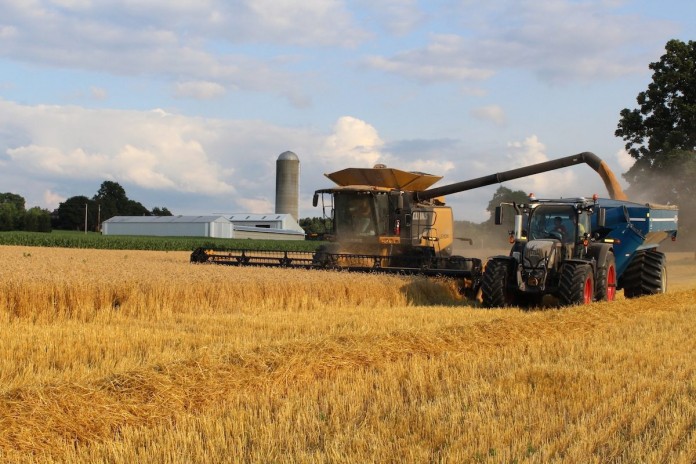Corn, soybean and wheat markets are trying to trade higher, and you can name your own reason why. Wheat prices may have the most mystery about them. Just when it seemed wheat was determined to go lower, prices reversed.
Last week, Chicago wheat futures lost 41 cents. It was a little odd that the market gained exactly 41 cents the week before. Then came Oct. 10, and wheat futures finished almost 58 cents higher again.
There are reasons for the price moves, but it is hard to see a trend in all the confusion. The Russian wheat crop this year was huge, so some onlookers suggested the increased Russian wheat crop made up for the wheat that never got grown or exported, or both, from Ukraine.
The Russians agreed to let ships into the Black Sea from Ukraine for a time, and, contrary to my pessimistic outlook, a few cargoes did escape. Next month, the agreement runs out, and most think the Russians will not renew it. That would be bullish for prices.
Issues with wheat
Then, there is the question if Ukrainian farmers will get the wheat planted. The answer seems to be, of course not. Too many unknowns, supply problems, unknown exports to allow accurate pricing would be the thinking.
The war is firing up again, and now the Ukrainians have bombed the bridge to the port area of Crimea that the Russians took a few years ago. Add to the Ukrainian mess an Aussie crop that has quality problems, drought in Kansas that is leaving wheat plantings un-germinated, and drought in Argentina that has them behind in planting, and you have some fundamental problems with production and logistics that define the reasons for recent volatility.
Corn
Then we have the corn. December corn futures gapped higher in the overnight session going into the morning of Oct. 10. The result was the highest price since June 22. We had a spike to $7.061⁄2, just above the $7.051⁄2 we saw in June. The day before, June 21, we had actually hit $7.253⁄4.
This rally may be a result of the bullish U.S. Department of Agriculture reports of last week. It may be helped by the fact that corn shipment out of Ukraine is likely to stop soon. It may be helped a little by the dry weather in Argentina, which is slowing planting there.
I am used to wanting dry weather to get the crops in, but in Brazil and Argentina, the farmers wait to get enough rain to start the crop, and then they plant. Brazil is on normal planting pace, but Argentina is at 13%, just over half of the normal 24% at this time.
It is easier to rattle off the negative influences on corn prices and to wonder if they don’t start to dominate the markets. Foremost is the shipping problem on the Mississippi River system. One recent count had almost 2900 barges waiting to get through one bottleneck in Louisiana.
We think of the Big Muddy as being deep and wide, but it is not deep enough in dry conditions. We have no large rain events on the horizon that would reestablish normal shipping. Dredges are working to deepen some channels. It was reported this week that barges are being loaded to seven feet instead of the normal 13.
That means it takes almost twice as many barges to move the same grain. We now anticipate a back-up at river elevators, which normally turn grain inventory over several times in the harvest season.
Freight costs have doubled to the point where it is said the cost of moving grain from Illinois to the Gulf costs twice as much as it costs to get it from Louisiana to China!
Corn prices are also tempered by the high dollar, which makes our product relatively expensive on world markets. Our weekly exports have lagged expectations. And, corn prices normally get lower as harvest progresses.
Against all the negatives, corn prices were up almost 6 cents last week, and added a whopping 15 cents Oct. 10. The morning of Oct. 11, we were off a penny and a half.
November soybean futures made the contract high back on June 9 at $15.843⁄4, and then broke badly. We have mostly been trading below $14.00 recently, with a $13.50 low Oct. 6. We bounced to $13.98 3⁄4 Oct. 10, but closed at $13.74. This rally higher is contra-seasonal, since the harvest is half over.
Anecdotal reporting says a lot of farmer bins went up this year, so the pressure of the beans going to town is not as great so far. However, the rally is hard to understand given the river shipping problems.













